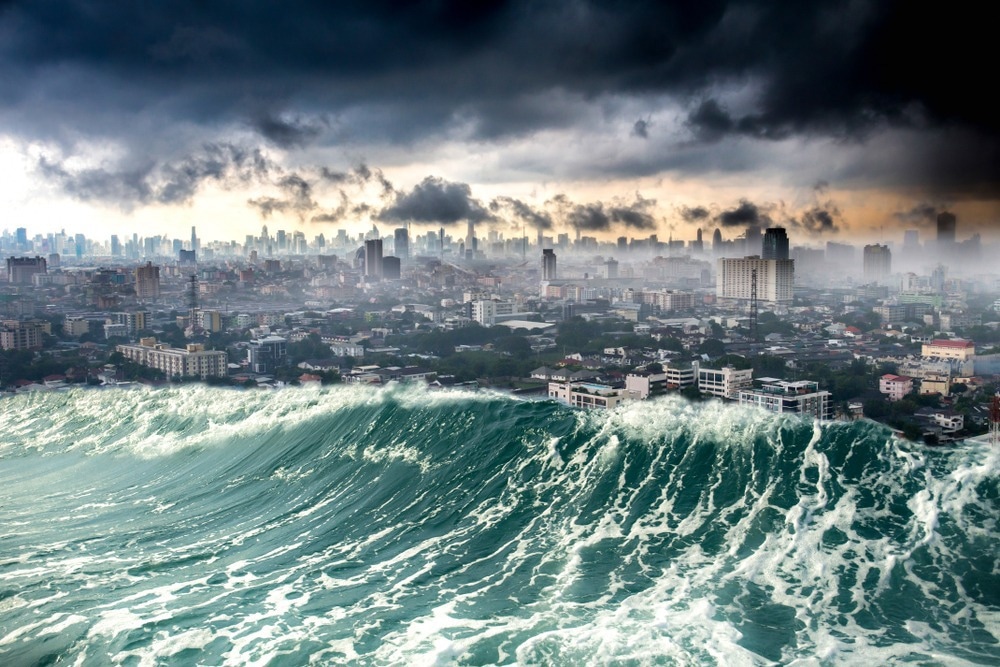A mass disaster is an unexpected, sometimes catastrophic event, causing serious injury and several deaths. Mass disasters can be separated into natural, accidental, or intentional acts. Examples of natural disasters include earthquakes, tornadoes, and tsunamis. Accidental disasters include train derailments or collisions, flight crashes, and building fires. Intentional acts include terrorism, bombings, suicide attacks, and the use of chemical and biological weapons for destruction.

Image Credit: Bignai/Shutterstock.com
The main task of forensic professionals involved in mass disasters is victim identification, whether injured, dead, or buried in mass graves. The identification process involves comparing and matching the DNA profiles of the victims to antemortem items or living families. Victims can be identified for many reasons, such as bringing closure, humanitarian reasons, and involvement in civil or criminal investigations.
Forensic Involvement and Considerations
Experiences from previous mass disasters prompted the International Criminal Police Organization (INTERPOL) to develop specific guidelines and protocols for Disaster Victim Identification (DVI). The DVI team consists of volunteers and experts in different fields, working together at internationally accepted procedures and practices to collect and compare ante-mortem and post-mortem data.
In many DVI scenarios, forensic identification of victims occurs relatively quickly through DNA, fingerprint, or odontology identification. However, there are many factors in how the identification can be delayed or disrupted.
Whether accidental or intentional, each mass disaster poses its own issues for forensic professionals in identifying the victims involved. The different factors, circumstances, and challenges a forensic professional may face include the number of victims, type of mass destruction, extent of body fragmentation, DNA degradation, accessibility of the scene and bodies, availability for sample collection, DNA references, and lastly, contamination of the sample.
Disaster Type, Victim Quantity, and Body Distribution
Each can bring ease and difficulties to investigators in the chaos of mass disasters. Below is a comparison of an aircraft crash and a tsunami.
In some aircraft disasters, an investigation can start by using flight details to find the list of onboard passengers, the crew, any other employees involved, time, direction, and possible location of the crash. This information can help aid in the forensic identification of the victims involved in the disaster and could lead to locating the bodies as well. Although this is in its simplest form, there are still many other factors to consider, such as the site of the crash (deep ocean, flatland, city buildings involvement).
In Tsunami disasters, the damage and distribution of bodies can extend over a larger area, including the mixing of land and ocean remains. The South Asian Tsunami that occurred on Boxing Day 2004 had estimated over 200'000 victims, the highest death count in history, but simultaneously a very low body recovery rate.

Image Credit: Ground Picture/Shutterstock.com
Body Fragmentation, Sampling, Contamination
The first significant decision in mass disasters that occur for forensic identification using DNA analysis involves sampling. In general, the recommendation is to collect bodily material that is the least affected by the disaster to avoid exogenic and body cross-contamination. However, in mass disasters, this general recommendation is not always possible.
In the case of the World Trade Centre (WTC) mass fatality of September 11, 2001, there was a very high level of body fragmentation and, therefore, sample disintegration. Because of this, there can be difficulties in deciding whether to analyze all remains you find on-site, only analyzing recognizable remains and/or analyzing a subset of many body fragments.
To give perspective, the WTC had around 2700 victims, but due to the high level of body fragmentation, there were almost 20'000 remains that went through DNA analysis.
DNA References, Comparison, and Challenges
There needs to be a comparison to a known reference to identify victims from a mass disaster using DNA identification. The reference samples can come from direct or non-direct sources.
Reference samples can come from personal items, such as toothbrushes and used razors, although these can lead to mixed profiles due to cell debris contamination. Reference samples, such as bloodstain cards, can also come from accredited and documented samples. Family references can be used from biological parents, siblings, and even the victim's children.
Due to the larger number of fragmented samples, there is a necessity to use appropriate automation software with robotic implementations for procedures and some of the steps in DNA analysis. The use of a lab-developed solution of an Excel spreadsheet would take too long when extensive DNA comparison needs to be completed under pressure. Due to this, any automated software used will need to have the capability to complete significant work on matching DNAs and interpreting any criteria or discrepancies.
Further Challenges and Issues
Forensic specialists and the DVI team need a variety of tools to do their job effectively. These include temporary mortuaries, acceptable ways of packaging and preserving the body remains at the scene, and unlimited resources while considering any cultural sensitivity and that country's specific associations and politics to DVI teams.
Another factor to consider is that in many disasters, it is unusual to have solely one nationality involved in the disaster. You will have to search for direct or indirect sources for the identification of bodies who may have any on record, especially for non-EU victims.
To conclude, some of the main factors affecting forensic identification involve the quantity and state of the victim's bodies, the environment in which the mass disaster occurs, the distribution and scale of the scene, and the country's limitations and political stand.
Each disaster is unique, stressful, and complex. To ease the tension of being faced with sometimes unprecedented challenges, there is a need for a multi-disciplinary approach to aid forensic identification of each victim in all mass disaster events.
Sources:
- Alonso, A. et al. (2005) Challenges of DNA Profiling in Mass Disaster Investigations. Croatian Medical Journal 46(4) pp. 540-548. PMID: 16100756.
- Bikker J. Identification of missing persons and unidentified remains in disaster victim identification recommendations and best practice. In: Mallet X, Blythe T, Berry R, editors. Advances in Forensic Human Identification. Boca Raton (FL): Taylor and Frances (2014) pp. 37-58.
- Blau S. and Hill T. (2009) Disaster victim identification: a review. Minerva Medicolegale 129, pp. 35-46.
- Hans H. de Boer et al (2019) The role of forensic anthropology in disaster victim identification (DVI): recent developments and future prospects. Forensic Sciences Research 4(4) pp. 303-315. DOI: https://www.tandfonline.com/doi/pdf/10.1080/20961790.2018.1480460
- Marrone, M. et al (2021) Forensic Analysis and Identification Processes in Mass Disasters: Explosions of Gun Powder in Fireworks Factory. MDPI: Molecules 27(1) p244. DOI: https://doi.org/10.3390/molecules27010244
- Pandey, R. et al (2022) Molecular Technique for Gender Identification: A boon in Forensic Odontology. BOHR International Journal of Current Research in Dentistry 1(1) pp. 18-29. DOI: https://doi.org/10.54646/bijcrid.004
Further Reading
Last Updated: Dec 29, 2022